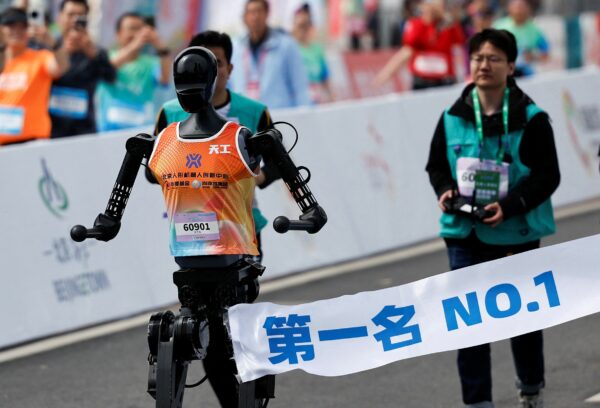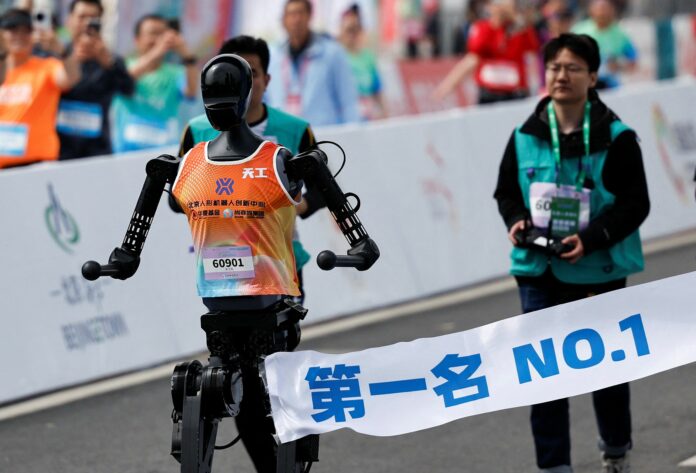SUZHOU, CHINA – In a spectacle that blurred the lines between athletic prowess and technological innovation, a contingent of humanoid robots joined thousands of human runners in the Suzhou Half Marathon held this morning. The event, billed as a unique experiment in human-robot interaction within a competitive sporting environment, drew significant attention both on the ground and online.
While the vast majority of the approximately 15,000 participants were human athletes vying for personal bests, a designated group of ten specially designed humanoid robots also took to the 21.1-kilometer course. These robots, developed by various Chinese research institutions and tech companies, were programmed to maintain a consistent pace, offering a novel challenge and pacing guide for human runners.
Mechanical Marathoners Take Their Marks:
The robots, ranging in size and design but all adhering to a standardized height of approximately 1.5 meters for visibility, were equipped with advanced navigation systems and battery technology allowing them to complete the half marathon distance. Each robot was assigned a target finish time, ranging from 1 hour 30 minutes to 2 hours 30 minutes, clearly indicated by illuminated displays on their chests.
“This is a fascinating intersection of sports and technology,” commented Dr. Li Wei, lead researcher from the Shanghai Robotics Institute, whose team fielded two robots in the race. “Our goal is not to replace human athletes but to explore the capabilities of robots in endurance events and to see how humans interact with them in this context.”

Human-Robot Interaction on the Course:
Throughout the race, human runners were observed running alongside the robots, using them as pacemakers to achieve their target times. Some runners expressed a mix of curiosity and encouragement towards their mechanical counterparts.
“It’s a bit surreal running with a robot,” said Zhang Lei, a participant aiming for a sub-2-hour finish. “But it’s actually quite helpful to have a consistently paced runner right beside you. They don’t get tired or change their stride.”
However, the robots were not without their challenges. Navigating the crowded course proved more complex than anticipated, with some robots occasionally veering slightly off the optimal running line or requiring minor adjustments from their human handlers who followed alongside. One robot, aiming for a 1 hour 45 minute finish, experienced a minor technical glitch around the 15-kilometer mark and had to be briefly assisted before continuing.
Finish Line Results and Future Implications:
All ten robots successfully completed the half marathon, with their actual finish times closely aligning with their programmed targets. The fastest robot clocked in at 1 hour 31 minutes and 12 seconds, while the slowest finished in 2 hours 28 minutes and 55 seconds.
Organizers hailed the event as a success, highlighting the potential for robots to play a more integrated role in future sporting events, potentially as pacemakers, guides for visually impaired athletes, or even participants in their own dedicated categories.
“This was a pilot event, and we have learned a great deal,” said Chen Tao, director of the Suzhou Sports Bureau. “We see potential for this to grow, perhaps with more sophisticated robots and even different types of races in the future. It’s about pushing the boundaries of what’s possible.”
The Suzhou Robot Half Marathon has undoubtedly sparked conversation about the evolving relationship between humans and machines, even in traditionally human-dominated fields like athletics. While the sight of robots competing alongside humans might still seem novel, this event offers a glimpse into a future where such interactions could become increasingly commonplace.
